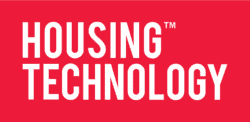Social housing in the UK is undergoing profound change, driven by tighter regulations, increased tenant expectations and the urgent need to address safety and environmental issues. From the Social Housing Act 2023 to Awaab’s Law, the pressure on housing providers to ensure compliance and deliver safer living environments has never been more intense. However, meeting these expectations is no small feat, especially when managing thousands of properties with limited resources. This challenge demands a transformative approach, and technology is at the heart of the solution.
The integration of innovative technologies such as the internet of things (IoT), predictive analytics and centralised platforms are revolutionising the way housing providers safeguard tenants and maintain compliance (IoT devices, in particular, are proving invaluable). Connected smoke alarms, CO detectors and environmental sensors offer real-time insights into property conditions. For example, a smart smoke alarm not only detects fires but also alerts housing teams instantly if it is tampered with or needs a new battery. Such connectivity ensures problems are addressed before they escalate, protecting both tenants and housing stock.
Beyond reactive maintenance
Yet the value of IoT extends far beyond reactive maintenance. Predictive analytics, powered by the data collected from these devices, is enabling housing providers to identify risks before they become critical. By analysing trends, such as repeated alarm activations or consistent humidity levels in a specific property, housing teams can prioritise interventions where they are needed most. This proactive approach not only enhances safety but also optimises resource allocation, a critical benefit in a sector often constrained by tight budgets and stretched workforces.
Technology is also addressing one of the most persistent challenges in social housing – fragmented data management. For years, housing providers have relied on manual processes and siloed systems to track compliance and monitor property conditions.
This disjointed approach increases the likelihood of oversights, particularly when managing thousands of devices across a diverse portfolio. Centralised platforms now offer a way forward, integrating data from multiple IoT devices into a single dashboard. Automated alerts, maintenance schedules and compliance reports can all be accessed in real-time, empowering housing teams to stay on top of their obligations with greater efficiency.
Environmental monitoring is another area where technology is making significant strides. Damp, mould and condensation are longstanding problems, with serious implications for tenant health and property conditions. IoT-enabled sensors that monitor temperature and humidity levels provide housing providers with continuous visibility into environmental conditions across their portfolios. When paired with water leak detectors, these systems can identify problems before they lead to expensive repairs or affect tenants’ wellbeing.
Cutting-edge applications
FireAngel Predict represents a cutting-edge application of these technologies, combining IoT with artificial intelligence (AI) to transform risk management in social housing. By analysing data from smoke alarms, CO detectors and environmental sensors, Predict identifies behavioural patterns and environmental factors that increase the likelihood of a fire or other hazards. This level of insight allows housing providers to focus their efforts on the properties most at risk, improving safety outcomes while reducing unnecessary maintenance visits.
The benefits of these innovations are wide-reaching. At their core, they enhance tenants’ safety by ensuring that potential hazards are identified and addressed quickly. Vulnerable tenants, such as older adults or individuals with disabilities, are particularly well-served by these systems, which offer tailored solutions to meet their needs. Beyond safety, technology also delivers measurable cost savings for housing providers. Proactive monitoring and predictive maintenance reduce the need for emergency callouts and minimise property damage, freeing resources to focus on long-term improvements.
Scalable with future regulations
Perhaps most importantly, adopting these technologies allows housing providers to futureproof their operations. Regulations are likely to evolve further in the coming years, with increasing emphasis on sustainability, energy efficiency and tenants’ wellbeing. IoT solutions are inherently scalable, allowing housing teams to integrate new devices and capabilities as compliance requirements change. Whether it’s air quality monitors, smart boilers or other innovations, a connected housing portfolio provides the flexibility needed to adapt to these demands.
Ultimately, the integration of new technologies into social housing is more than a matter of compliance. It is an opportunity to redefine the sector’s approach to safety, sustainability and tenant satisfaction.
As housing providers navigate this changing landscape, embracing innovation will be key to building safer, smarter communities. By prioritising the adoption of IoT, AI and centralised platforms, housing leaders can not only meet today’s challenges but also position their organisations for long-term success.
You can find out more by contacting our connected solutions team at fireangel.co.uk/trade/connected-solutions.
Tazmin Ahlfors is the business development manager at FireAngel.

